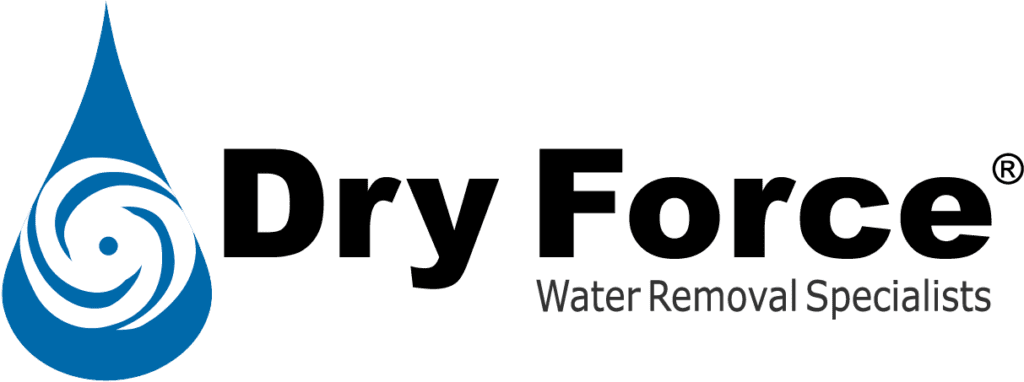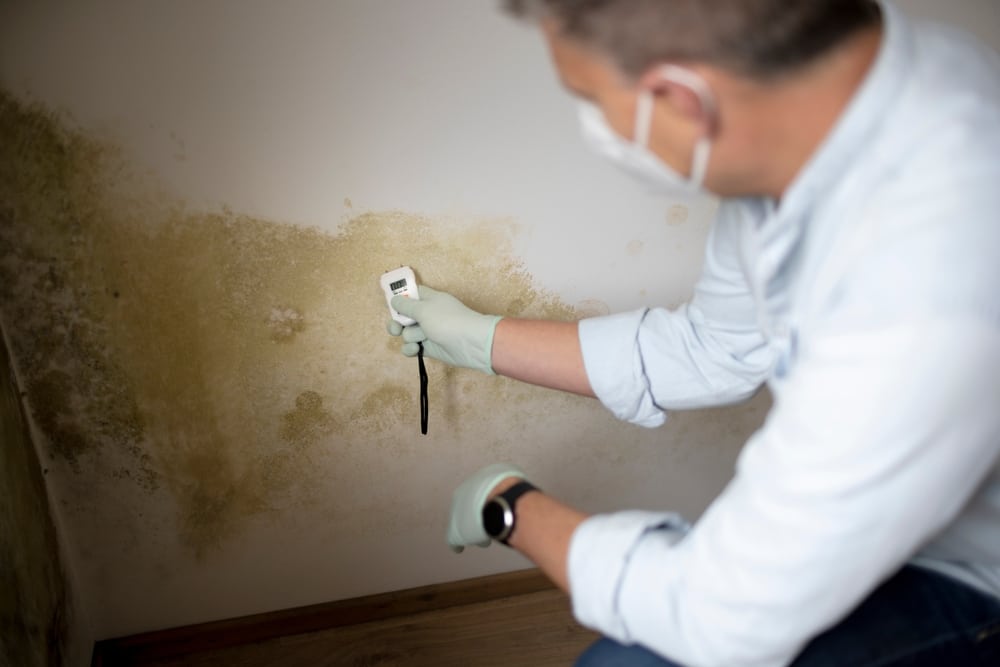
Water-damaged walls aren’t always easy to spot, but if you know what to look for, you can catch small problems before they evolve. There are numerous signs of water damage in walls—at Dry Force, we look for these signs daily, saving customers from mold infestations, buckling structures, and thousands of dollars in damages.
In this blog, we’ll help you master the art of detecting water damage in walls. With a trained eye, you can properly safeguard your home or business, avoiding further water damage and excessive renovation costs.
Table of Contents
How Does Water Damage Occur?
When your property suffers water damage, it’s like it’s been infected with a disease. Like most diseases, water damage must be treated and removed, or it can have lasting, expensive consequences.
Excess water increases your property’s indoor humidity and interacts with every material it touches, usually breaking it down. Water breaks down building materials in various ways, interacting with each type of material differently. Here are a few examples:
Absorption Into Building Materials: Wood, drywall, and insulation are especially prone to absorbing water. If a pipe bursts or a flood occurs, these materials will soak up excess water, leading to warping and deterioration.
Spread and Expansion: Water that has been absorbed or pushed away from building materials may travel to other surfaces. It can seep through walls, move across floors, or leak through ceilings.
Indirect Damage: Lengthy exposure to water damage can result in other issues, like mold growth, rusting, and interference with appliances and wiring. Mold growth is especially common, resulting in weak walls and health hazards.
What Does Water Damage Look Like?
Now that you know how water damage occurs and how it harms building materials, let’s learn how to spot it. There are several signs of water damage in walls and ceilings, but they aren’t always obvious. Sometimes, you simply cannot see water-damaged walls because the excess water has not spread enough. But here are some visual clues.
Water Stains: Discolorations and stains on your walls are giveaway signs of water damage. Be sure to look closely, inspecting corners and areas where the floor meets the wall.
Mold: If you find mold on your property, you are either dealing with high humidity or water damage. Sometimes, it’s both.
Soft Spots or Paint Damage: Look for chipped or peeling paint on your walls, as these problems can indicate a larger water damage issue. If you poke the wall and it’s soft, call Dry Force’s water damage restoration services immediately.
Warped or Sagging Walls: Visual bulges and sags are cause for alarm. A warped or sagging wall indicates high moisture content, which must be addressed quickly.
Additional Signs of Water Damage
- Strange dripping noises
- Humidity and dampness
- Respiratory health issues
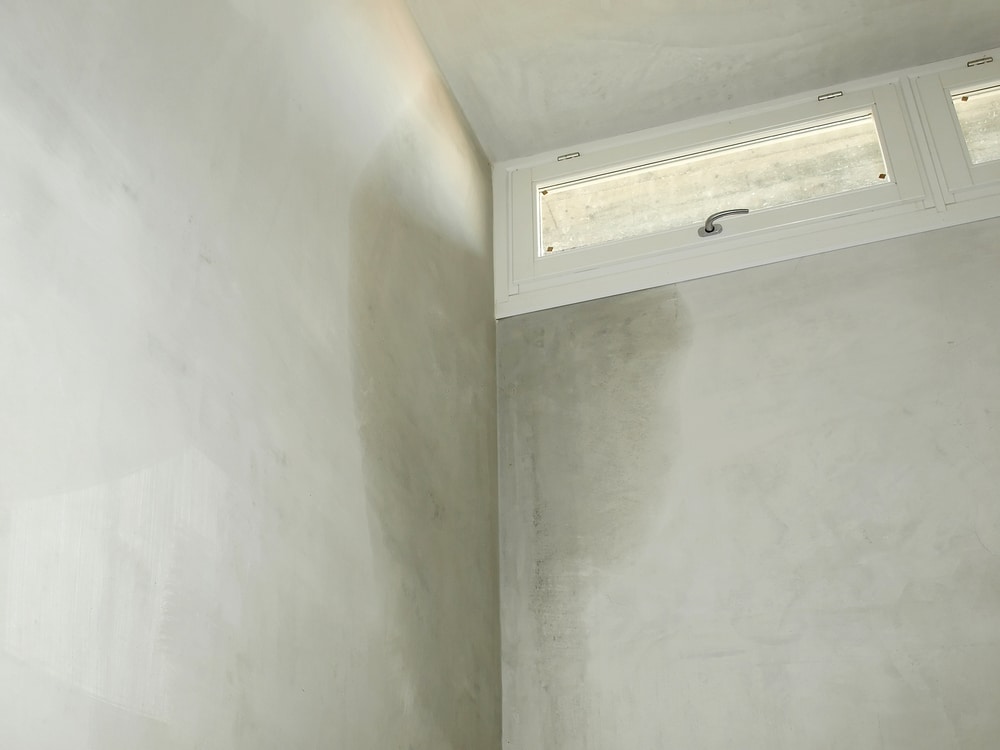
4 Signs of Water Damage in Walls
Finding the true extent of water damage requires a professional water damage assessment, which uses advanced moisture detectors and monitoring systems. But if you know the initial signs, you can catch a small issue before it becomes a big problem. This can save you thousands of dollars in renovation costs.
1. Discolored Spots: Look for yellow and brown stains on your walls and in corners. Discoloration is the most common sign of water-damaged walls.
2. Peeling, Chipped, or Bubbling Paint: Wallpaper and paint can become discolored and misshapen when affected by water damage.
3. Mold and Mildew Growth: Mold and mildew often appear 24 to 48 hours after mold growth. When unaddressed, mold can rapidly spread, weakening your building’s structure and negatively affecting your health. Mold is often accompanied by musty, damp smells. If you can’t see any mold but something smells off, trust your nose—mold likes to stay hidden inside walls.
4. Spongy Walls: Drywall and plaster become soft to the touch when riddled with water damage.
If you notice these signs, contact a professional water damage restoration company like Dry Force as soon as you can. Our drywall water damage restoration and mold removal services can stop water damage in its tracks, efficiently restoring your home or business from the brink of disaster.
How Long Does Water Damage Take to Show?
Unfortunately, water damage doesn’t follow a consistent pattern, meaning it can be visible within hours, days, or weeks. This timeline depends on several factors, including the severity of the water damage, your building’s materials, and the climate/environmental conditions.
Water can become trapped inside walls, floors, and ceilings, so even if it doesn’t show itself, it can be a threat. If you notice musty odors or odd dripping sounds, you may be dealing with hidden water damage.
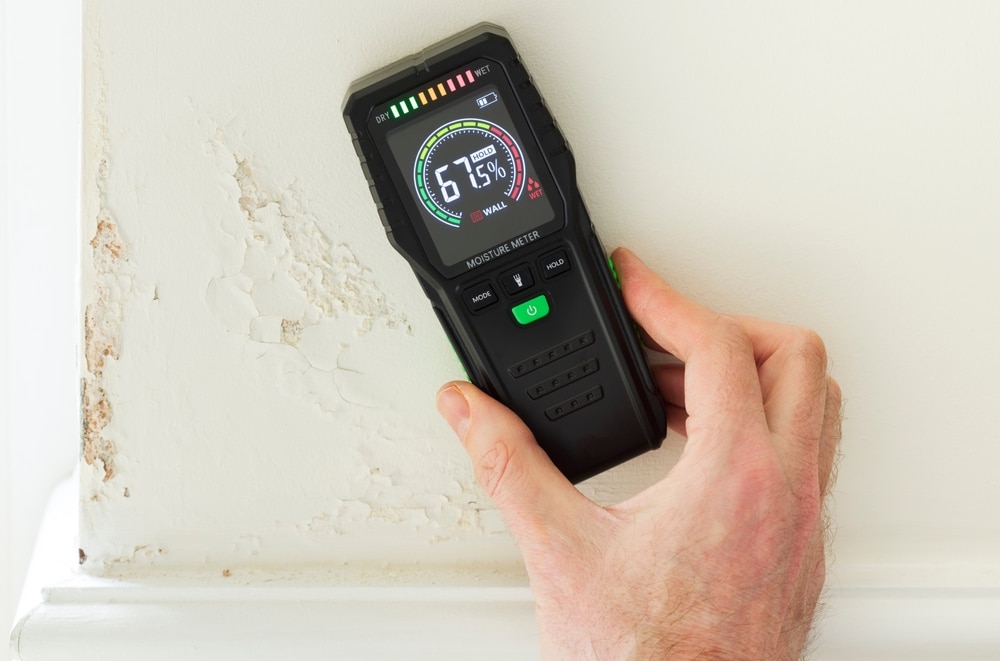
How to Tell if Water Damage is New or Old
Signs Your Water Damage is New
Your water damage is new if the affected area is still wet. Another sign of new damage is a small affected area. Small spots are often fresh, meaning that the water hasn’t spread too far yet.
If the spot is wet and small, then there should be very little discoloration. A spot that isn’t discolored or decayed is often on the newer side.
Signs Your Water Damage is Old
A dry, discolored patch is likely a sign of old water damage. If this patch has rings around it, this is another sign of older damage.
A particularly unsavory sign of old water damage is mold. Mold usually stays hidden for days or weeks, so if it becomes visible, you should call a water damage restoration company as soon as possible.
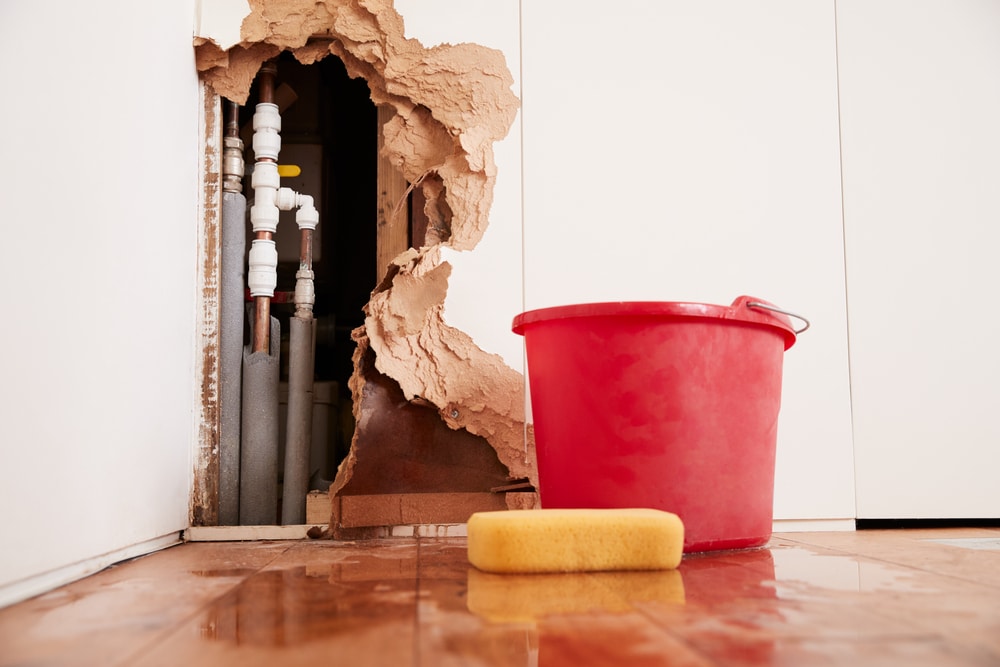
How to Remove and Repair Water Damage in Walls
When you spot water damage in walls, you should shut off your water supply. This prevents further damage and property loss until you find and repair the source of the issue. If you notice leaks, you can put a bucket or towel beneath the leak to prevent damage to floors.
After taking immediate action, you should contact a water damage restoration company. Water damage professionals will arrive with the proper equipment and strategies to remove and repair water damage in walls.
At Dry Force, we remove excess water and restore your property using the following process.
Water Removal: Our technicians use high-power pumps and vacuums to remove all standing water from your home or business. We use non-destructive methods when possible, saving you from higher repair costs.
Drying and Dehumidification: Removing excess water isn’t enough. A proper restoration job involves drying your walls, floors, and ceilings to eliminate any water hiding within materials. We then use advanced dehumidifiers to reduce your indoor humidity and prevent further mold growth.
Sanitization: If the excess water is contaminated with bacteria or toxins, we thoroughly clean the affected area and test your air to ensure a healthy indoor environment.
Repair and Restoration: Our technicians give you a full damage assessment, detailing unsalvageable materials and areas that need to be restored. We will then remove weakened and mold-riddled materials, replacing them with stronger alternatives that restore your property’s structural integrity.

Hire Dry Force for Water Damage Assessments & Restoration
When you understand the signs of water damage in walls, you understand how to catch water damage in its early stages. Early detection is critical to reducing repair costs and health hazards.
At Dry Force, we hold customer education as a pillar of our mission, helping home and business owners stay vigilant about damage within their walls. When you’re vigilant, you’re safe, and Dry Force has kept Texas safe for over 20 years, providing efficient and reliable water damage restoration services in Houston, Dallas, Austin, and more.
If you notice water-damaged walls on your property, call Dry Force’s water damage experts as soon as possible. We will arrive promptly, set up our equipment, and waste no time restoring your property to pre-loss condition.
At Dry Force, we turn chaos into calm. For expert restoration with unrivaled customer service, give us a call at (866) 344-1273 or contact us online.
